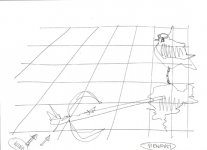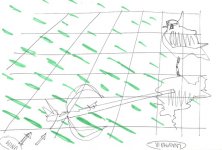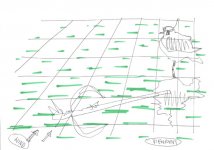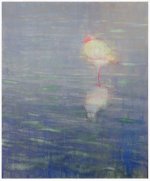Strandman
Well-known member
a question for you folks who understand these things- I'm tinkering with a lapwing painting from the sketch posted downthread and realise that there's something I've never got a grip on
if I've got the wind blowing at an angle as shown here (scribble 1 and 2 attached, wind from bottom left of the page), I think I should see - did see in fact - ripples blowing at an angle across the water (scribble 2), floating reed swinging into line with the wind
but it looks cockeyed and queasy making
so if I take look at a master of these things like the wonderful pics in Chris Rose's Grebes of the World, then no matter how varied and rich the ripples, they run horizontal across the page every time (like in scribble 3)
does anyone know what's happening here? is there some physical reason why ripples seem to resolve into a horizontal alignment, or is just one of those things where no matter what is technically correct, horizontal lines are the conventional and convincing way to do them?
if I've got the wind blowing at an angle as shown here (scribble 1 and 2 attached, wind from bottom left of the page), I think I should see - did see in fact - ripples blowing at an angle across the water (scribble 2), floating reed swinging into line with the wind
but it looks cockeyed and queasy making
so if I take look at a master of these things like the wonderful pics in Chris Rose's Grebes of the World, then no matter how varied and rich the ripples, they run horizontal across the page every time (like in scribble 3)
does anyone know what's happening here? is there some physical reason why ripples seem to resolve into a horizontal alignment, or is just one of those things where no matter what is technically correct, horizontal lines are the conventional and convincing way to do them?
Attachments
Last edited:








